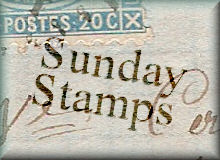So with the potential to have totally gone wrong with my choices today, I still hope you will at least like the stamps =)
I have these three different issues, all representing Macedonian Cultural Heritage.
First we have four stamps issued in 2000, representing antique jewelry, in particular, from left to right, at the top, the 10 denar stamp shows a Bracelet from the 20th century from the region of Bitola (a Macedonian town), while the 5 denar stamp next to it shows a Pin with an Icon from the 19th century from the Ohrid region.
Below, the 30 denar stamp shows the Butterfly Brooch from the 19-20th century from the Bitola region, while the 20 denar stamp next to it shows 18th century Earrings from the Ohrid region.
Out of all these, the most famous one is the filigree butterfly...you can see it in all sizes sold around, sold either as a piece of jewelry or as an ornament to keep at home.
In the Christian religion, the metamorphosis a butterfly undergoes is symbolic of the spiritual evolution all Christians go through. In ancient mythology, the butterfly stands for wisdom and everlasting knowledge, while as a part of the jewelry dates back to the end of the 19 th century. It has been made according to the traditional Macedonian brooch and represents the most exquisite filigree work by the Ohrid Handicraftsmen School from the end of the 19 th and the beginning of the 20 th century. It has been made in a hard technique of filigree work, spinning round several thin handmade silver stripes into one remarkable whole. This kind of manufacture could be afforded only by the masters, wealthy tradesmen and other rich people from that period.
The FDC below shows two more pieces of jewelry...golden earrings with doves dating back from the II century B.C from the village of Marvinci, and а lion-head earring, dating from IV century B.C from the region of Demir Hisar.
And something a bit different...and FDC showing some textile, often used as a pattern for carpets or rugs as shown here. You can often see these in the houses in the rural areas especially.
well, that would be my contribution for today...again, sorry if I went somewhat astray with the topic :)
for more folk-art, click here:




